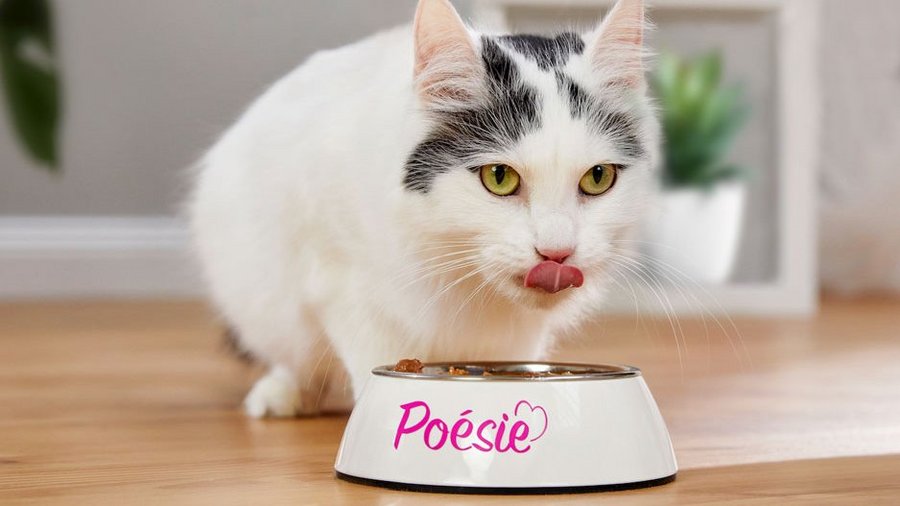MISCONCEPTION 1: Dry food is bad for cats.
Many think dry food is not as good for cats as wet food. But one thing is clear: One thing is clear: cats get much less water from dry food. Animals that are fed mainly on dry food should therefore drink a lot. A plus point for dry feed: Cats have to do more chewing work. They eat more slowly and thus often see food intake as more satisfying.
MISCONCEPTION 2: Cat food should always be available.
Cats do not eat out of boredom. The food bowl can therefore always be kept full. A popular misconception, which is not true. There are also cats who do not know how much food is good for them. That they quickly become too fat is one thing. That large quantities cannot be digested well is another. After a meal, the urine of your cat becomes more alkaline. Only by ensuring sufficiently long food breaks does it return to the acidic range. And this is important when it comes to dissolving urinary stones, which can otherwise lead to bladder infections. So if you feed your cat only at fixed meals – preferably several times a day in small units – you are making an important contribution to its health.
MISCONCEPTION 3: Raw meat is species-appropriate for cats
Many cat lovers believe that biologically appropriate raw food comes closest to a cat’s natural diet. But the fact is: you can get a lot wrong with the composition if you’re not a nutritionist. In order to meet the nutritional needs of a cat, it needs proteins, fats, and carbohydrates as well as minerals, vitamins, micro-nutrients, and trace elements. In addition, the essential amino acid taurine is enormously important for cats. All of these ingredients must be precisely matched in quantity when providing biologically appropriate raw food or added when feeding raw meat. This is a science in itself. If you forget something or calculate incorrectly, it can lead to deficiency symptoms. In this case, you should opt for high-quality cat food. Because it contains everything your cat needs for a healthy life.
MISCONCEPTION 4: Cats can be fed a vegetarian/vegan diet
What works for dogs also works for cats, right? Not quite true. Dogs are omnivores. Cats, on the other hand, are carnivores. Both their digestive system and metabolism are adapted to animal food as a source of nutrition. Of course, there’s nothing wrong with vegan or vegetarian snacks for in-between if your cat likes them. However, experts agree: However, experts agree that cats cannot utilise 100% of the protein from plants. Thus, the basis for feeding cats a completely and exclusively plant-based diet is lacking here.
MISCONCEPTION 5: Food supplementation is never a mistake
In many cases, nutritional supplementation is recommended. During the change of coat, in winter, and when your cat is stressed. But caution is advised here. Nutritional supplementation is far less harmless than it sounds. When supplementing with calcium, the amount of phosphorus your cat consumes must also be taken into account. Vitamin A may not be given indefinitely. It can accumulate in the body and damage bones and joints. And even vitamin C, which is considered harmless, can be toxic in excess. As long as your cat is healthy and fit and has no allergies and/or other illnesses, it will get everything it needs from a high-quality food. Additives should not be given thoughtlessly, and their dosage should always be agreed with the vet.
MISCONCEPTION 6: Cats love fish
Fish is considered a typical cat meal. ~ One might almost think fish is the most natural of all cat foods. This is not quite the case. Fish contains valuable and important nutrients. However, uncooked fish also contains thiaminase, an enzyme that destroys the B vitamin thiamine. This can lead to long-term loss of appetite, seizures, and more in cats. Thiamine can be inactivated by cooking; however too much fish can lead to an under-supply of minerals and vitamins. So if you want to spoil your cat with fish, ready-made wet food with fish content is the best option.
MISCONCEPTION 7: Cat food and dog food are the same thing
What might seem absurd to a cat lover is not so unusual in a mixed household with cats and dogs. Why bother buying two different kinds of food? Yes, there are actually good reasons for this. That’s because both types of food are optimally adapted to the respective species. For example, dog food contains less protein and fat than cat food. Moreover, no additional taurine is added to it; this is needed to a greater extent for cats. In the long run, dog food will lead to deficiency symptoms in your feline friend and can seriously damage its health.
Feeding cats a healthy diet is not rocket science. In a reputable pet shop, you get everything that your darling needs for a species-appropriate cat life. So you can safely spare yourself experiments. Just like the worst nutrition mistakes.

